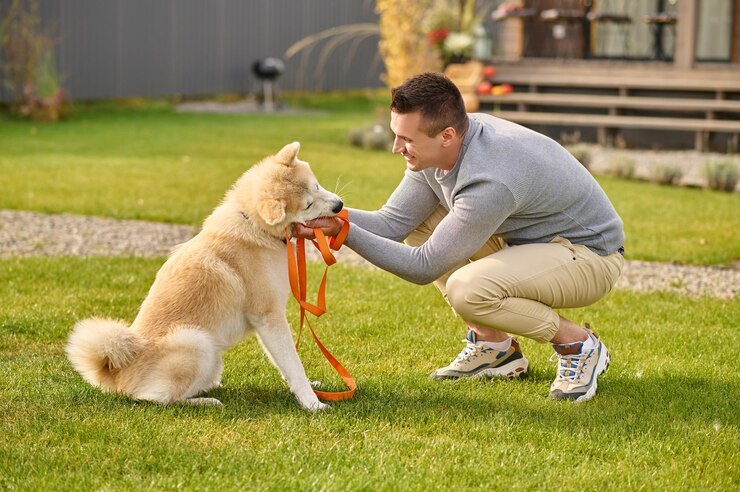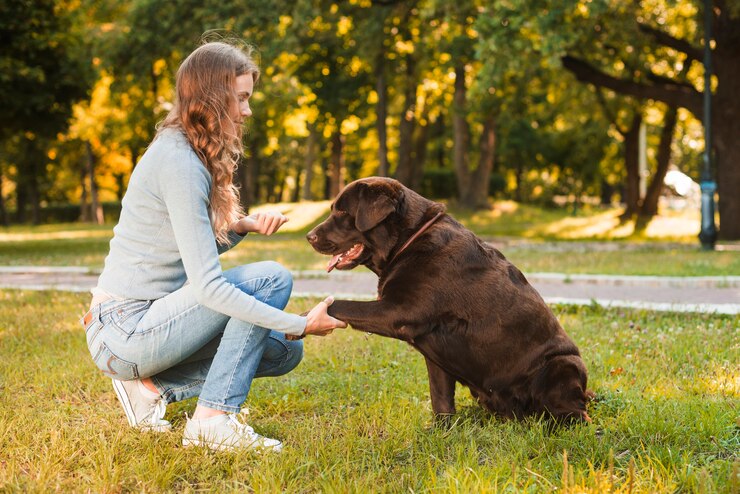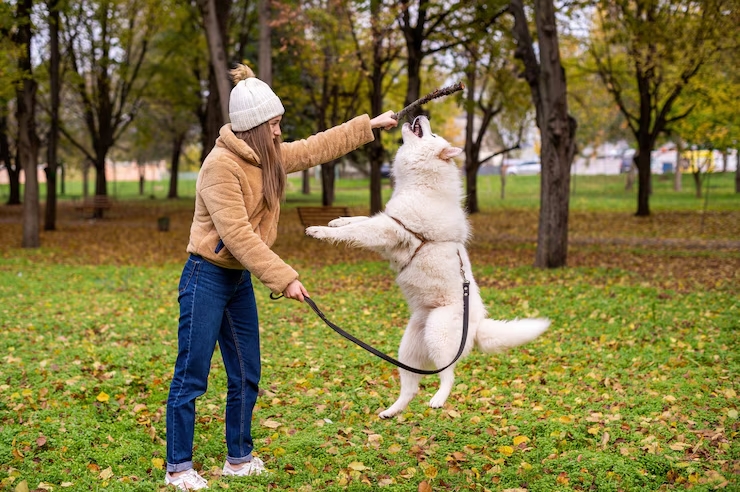Introduction
Canine preparation is a fundamental part of capable pet proprietorship. Whether you have a new puppy or an older dog, proper training ensures they are well-behaved, happy, and safe. Training enhances bonding, provides mental stimulation, and prevents behavior problems. In this guide, we will cover various dog training techniques, essential commands, common behavior issues, and advanced training activities.
Understanding Dog Training
Dog training involves teaching your pet essential obedience skills, socialization, and behavioral control. Training programs can be customized for different breeds, ages, and temperaments. A well-trained dog is more confident, adaptable, and responsive to commands.
Dog Training Techniques and Methods
Positive Reinforcement
One of the best preparation techniques is encouraging feedback. Rewarding good behavior with treats, toys, or praise encourages your dog to repeat desired actions. This technique builds trust and strengthens your bond with your pet.
Clicker Training
Clicker training is a popular reward-based training method that uses a clicking sound to mark correct behavior, followed by a reward. It helps dogs associate the click with positive outcomes, making learning faster and more effective.
Crate Training
Crate training helps in housebreaking and provides your dog with a safe space. A crate serves as a personal retreat and aids in preventing destructive behavior when unsupervised.
Housetraining and Housebreaking
Housebreaking is one of the first lessons a new dog should learn. Consistency and patience are key. Take your dog out regularly, reward successful potty trips, and use doggy doorbells to help them communicate their needs.
Leash Training and No-Pull Harness
Leash training is essential for every dog. A no-pull harness can prevent excessive pulling and lunging, ensuring a more enjoyable walk. A loose leash walk is ideal, where your dog walks beside you without pulling.
Training Sessions and Reinforcement
Short training sessions keep your dog engaged and prevent frustration. Practice commands daily and gradually increase difficulty levels. Reinforcement helps solidify learning and ensures consistency.
Essential Commands and Behaviors

Basic Commands
Teaching basic commands establishes control and safety. Some fundamental commands include:
- Sit – Helps with impulse control.
- Stay – Prevents unwanted movement.
- Come – Ensures your dog returns when called.
- Drop it – Teaches them to release objects.
- Speak – Encourages controlled barking.
- Back up – Helps in managing space and movement.
- Ignore other dogs – Prevents distractions during walks.
- Not running away – Keeps them from escaping dangerous situations.
- Not jumping on people – Promotes polite greetings.
Dog Training Tools and Supplies
Having the right tools makes training more effective. Essential dog training supplies include:
- Treats – Used for positive reinforcement.
- Toys – Help with engagement and reward-based learning.
- Doggy doorbells – Assist in housetraining.
- Leash – Essential for outdoor training.
- No-pull harness – Controls excessive pulling.
- Crate – Provides a safe and comfortable training environment.
Addressing Common Behavior Issues
Submissive and Excitement Urination
Dogs may urinate due to excitement or submission. To prevent this, avoid excessive excitement during greetings and build their confidence through positive interactions.
Jumping on People
Teach your dog to sit when greeting people. Reward calm behavior and discourage jumping by ignoring them when they jump.
Running Away
Train recall commands like “come” and use rewards. Avoid chasing them, as it may encourage them to run further.
Ignoring Commands
Dogs may ignore commands due to distractions or lack of reinforcement. Use patience and consistent training to reinforce obedience.
Advanced Dog Training and Activities

Dog Sports and Mental Stimulation
Advanced training includes agility, obedience trials, and scent work. These activities keep your dog physically fit and mentally stimulated while strengthening your bond.
Proofing Behaviors
Proofing ensures that your dog obeys commands in different environments. Practice commands in various locations and gradually increase distractions to test their reliability.
Physical Exercise
Regular physical exercise, such as running, hiking, and interactive play, helps maintain a healthy weight and prevents boredom-related behavior issues.
Socialization for a Well-Rounded Dog
Exposing Dogs to New People, Animals, and Places
Socialization prevents fear and aggression. Introduce your dog to different environments, people, and animals from an early age to help them become more adaptable.
Preventing Fears and Phobias
Gradual exposure to potential stressors, such as loud noises and unfamiliar situations, helps prevent anxiety and phobias. Positive experiences create confidence and reduce fear-based reactions.
Benefits of Dog Training
- Fortifies the connection among you and your canine.
- Provides mental stimulation and prevents boredom.
- Ensures your dog is well-behaved and under control.
- Increases their safety and freedom.
- Reduces the likelihood of behavioral issues.
Conclusion
Dog training is an ongoing process that requires patience, consistency, and the right techniques. Whether focusing on basic obedience, solving behavior problems, or engaging in advanced training, the right approach ensures a happy and well-adjusted pet. By using positive reinforcement, essential commands, and proper socialization, you can create a fulfilling and enjoyable training experience for both you and your dog.
